Past and Present: The Half Moon Hotel, Coney Island
A look at Brooklyn, then and now. When Coney Island was first developed in the late 1800s, it was a place of high end resort hotels that catered to the moneyed crowd that came to the shore from as far away as Manhattan. It was only in the first decade of the 20th century that…

A look at Brooklyn, then and now.
When Coney Island was first developed in the late 1800s, it was a place of high end resort hotels that catered to the moneyed crowd that came to the shore from as far away as Manhattan. It was only in the first decade of the 20th century that the Coney Island we’ve immortalized in our culture emerged: the slightly naughty, but fun-loving beach and entertainment spot for the masses. The Coney Island Chamber of Commerce was of two minds on this. On the one hand they loved the success of Coney, and there was certainly money to be made. The rich swells may have been all but gone, but a million people paying a nickel for a hot dog beats a dozen people having an expensive full course meal, any day of the week, when it comes to profit. Quantity trumps quality in this case.
But the price of quantity could be high. Even in the ‘teens and ‘20s, Coney Island had a rather tatty and tawdry reputation, and cheap looks, well…cheap. The Island fathers wanted to be more like Atlantic City, which still had the fancy hotels, the families spending their summers by the shore; in other words, a real resort by the sea. So on a part of the beach a sufficient distance away from the amusement parks and honky tonk joints, a huge sixteen story, 400 room hotel rose on the beach, a hotel named the Half Moon, after Henry Hudson’s legendary ship, which was thought to have first landed right there where West 29th Street met the Boardwalk. The hotel was financed by members of the Coney Island Chamber of Commerce, which included members Edward Tilyou, William Ward, William Mangels and Charles Feltman, some of Coney Island’s richest and most successful amusement park owners.
The hotel was designed in 1925 by George B. Post & Sons. They were also responsible for the Roosevelt Hotel in Manhattan, and usually worked in the Colonial Revival style, but for the Half Moon, they went with a more exotic Spanish Colonial style. The building was in a “C” shape with two wings coming off a central tower. The central tower actually was a dead ringer for the Dreamland Amusement Park tower, which had burned down with the rest of the Amusement park in 1911. Although they were trying for class, they totally went down the theme park road, with an Isabella Lounge, a large half-moon weather vane, busts of Henry Hudson everywhere, and a place called the Galleon Grill, which had murals depicting 17th century Spanish ports. There were urns and finials on top of every roofline, and the entire hotel loomed over the beach, so large that it could be seen from miles away.
In its early days, it was successful, and soon became a popular place for weddings, banquets and other festivities. But like just about every enterprise that started in the late 1920s, you just know it was on the fast train to disaster after the Great Depression starts. The Half Moon began to fail big time, and went into foreclosure in the mid-1930s. At one point, guests were sitting in a banquet room when the bank’s people came in to take the furniture. They ended up leaving empty handed, and a deal was worked out. The hotel managed to hang on, and stay open, but between the Depression and Prohibition, the dream of a hugely successful summer resort hotel was gone. By 1939, Parks Commissioner Robert Moses was looking to City Hall for permission to tear it down.
The economy was bad, but Prohibition had been great for one group of people – criminals. By the late 1930s the newspapers were filled with lurid tales of gangsters who were filling their pockets with bootleg booze money, and filling their criminal competitors with holes. One operation, called Murder Inc. was made up of a group of Italian and Jewish gangsters from Brownsville and Ocean Hill. They were a very nasty bunch, and were led by Abe “Kid Twist” Reles, a career criminal sociopath. Reles and his gang had worked their way through most of the local gangsters, killing them off one by one until they were running the Brooklyn rackets. Impressed by their enthusiasm, the Murder Inc. boys were hired by the the ϋber-gangsters called the “Syndicate,” which included Albert Anastasia, Meyer Lansky, “Bugsy” Siegel, Dutch Schultz and Lucky Luciano.
Murder Inc. members became the hit squad for the Syndicate, going all across the country eliminating people that the mobsters thought were in their way, usually other gangsters. It was thought that over the course of business, Murder Inc. killed at least a thousand people, including purges within the Syndicate itself. Dutch Shultz himself was one of their victims. At last, in 1940, after being informed on by a lower level thug, Kid Twist Reles turned informant himself, seeking to avoid prison and the death penalty. For almost a year, he spilled his guts to Brooklyn ADA Burton Kaplan, clearing at least 85 murders from the cold case file.
On November 13, 1941, Reles was supposed to testify against Albert “The Lord High Executioner” Anastasia in Brooklyn court. Ever since he had begun to rat on his old buddies, the district attorney’s office had kept him at the Half Moon Hotel, under constant police guard. In spite of having five detectives guarding him, on November 12th, the night before his testimony, Abe Reles was found dead on the roof of one of the lower towers of the hotel. The police found tied bed sheets leading down from his window, sheets that were secured to a radiator by wire. It looked like he had fallen trying to get out, but no one believed it. Reles had been a perfectionist, and the knots were badly tied. A man that had tied up lots of people before killing them would have done better. Everyone knew he had been thrown or pushed from the window. As someone said, “the canary could sing, but he couldn’t fly.” The Half Moon got more publicity than it had had in years.
But, it wouldn’t be enough. In 1943, the military commandeered the hotel and turned it into a Navy hospital and rehabilitation center called Seagate US Naval Special Hospital. Over the course of the rest of the war, they treated 4,832 patients there. The Navy returned it after the war, in 1946, and the hotel became the Half Moon, once again. A small dedicated group of people moved in as permanent guests. They had to have known it wouldn’t last.
In 1949, the hotel was sold for a million dollars, and became Harbor Hospital, known for its maternity facilities. Many a Brooklynite was born at Harbor Hospital during the short time it existed there. Before the hospital moved in the tenants had to be moved out, and that took place in court. The tenants lost. Harbor only stayed there a year. In 1951, the Hebrew Home and Hospital for the Aged bought the hotel and planned to house indigent senior citizens there in a hotel like setting, with private one and a half room suites. The Home would have dining facilities, recreation rooms, and even a synagogue for its residents. They opened for business in 1953. (On a personal note, I sang with an opera company there once, in 1983. I had never been to Coney Island, at the time, and had no idea where the heck I was. It wasn’t until researching this article that I realized I had been in the Half Moon Hotel.)
By the 1990s, the Home was called the Metropolitan Jewish Geriatric Center, and the hotel building itself was known as the Parshelsky Pavilion. MJGC wanted to build a new Shorefront Jewish Geriatric Center, but the old hotel was in the way. It was torn down in 1996. When it was built, the Half Moon had been the tallest building around for miles. By the time it was torn down, its distinctive tower was lost in the towers of all of the high rise housing around it. Today, the name “Half Moon Hotel” is only remembered by mobster buffs and lovers of old Coney Island. GMAP
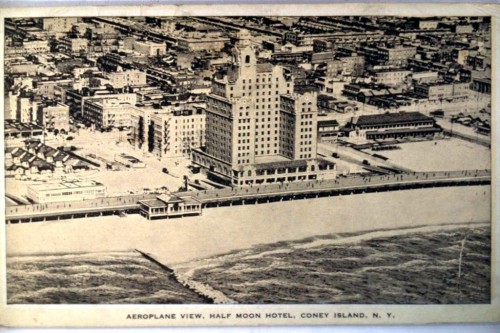
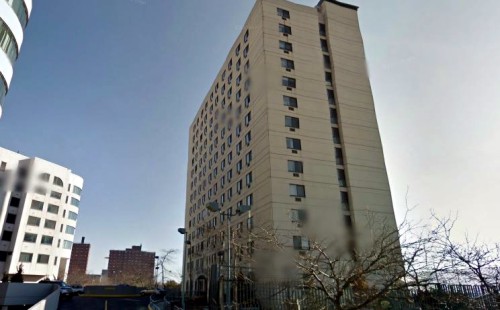
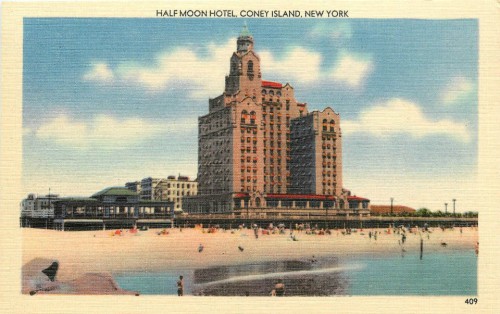
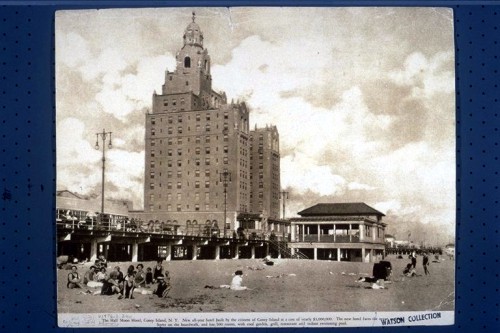
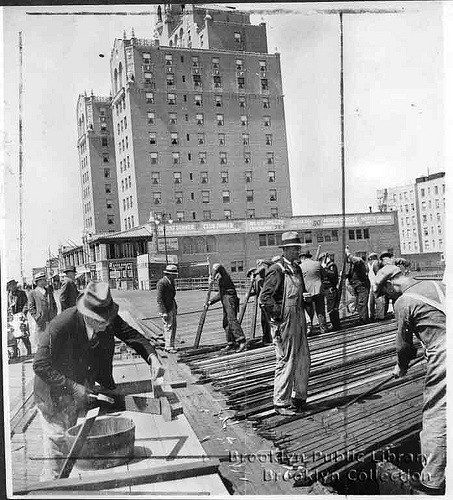

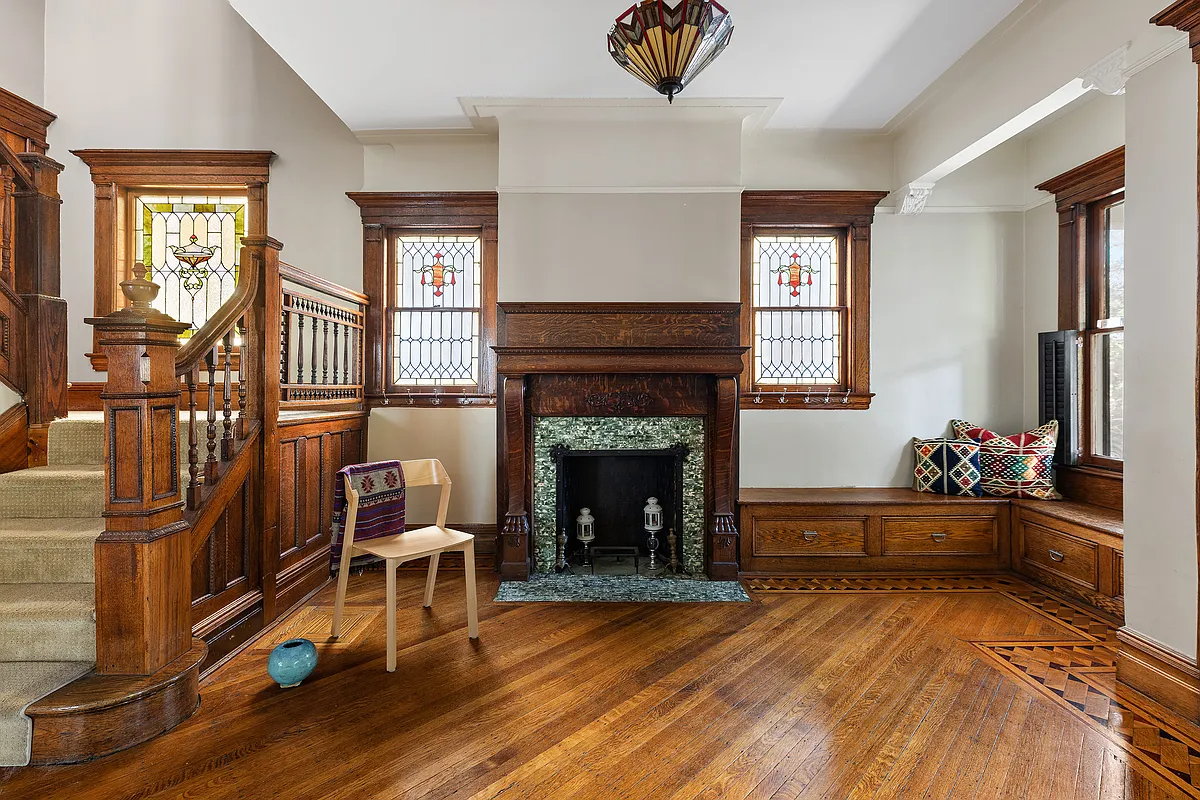
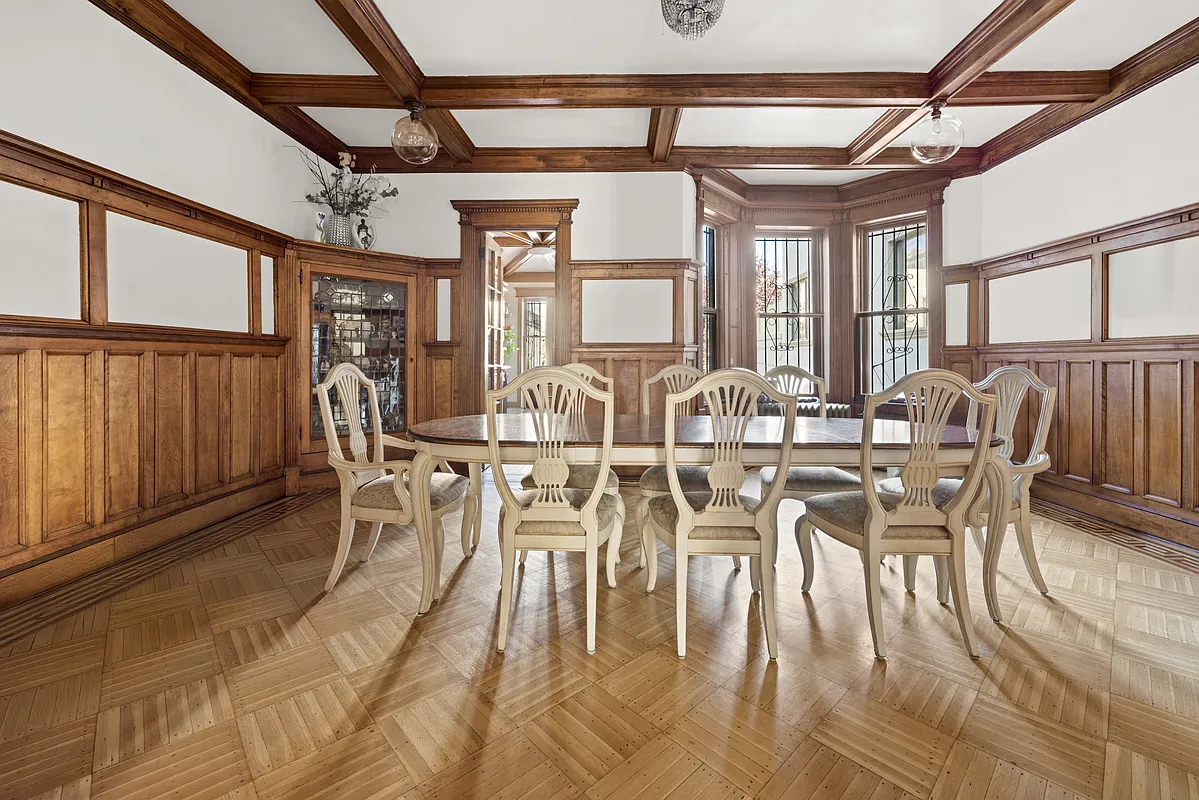
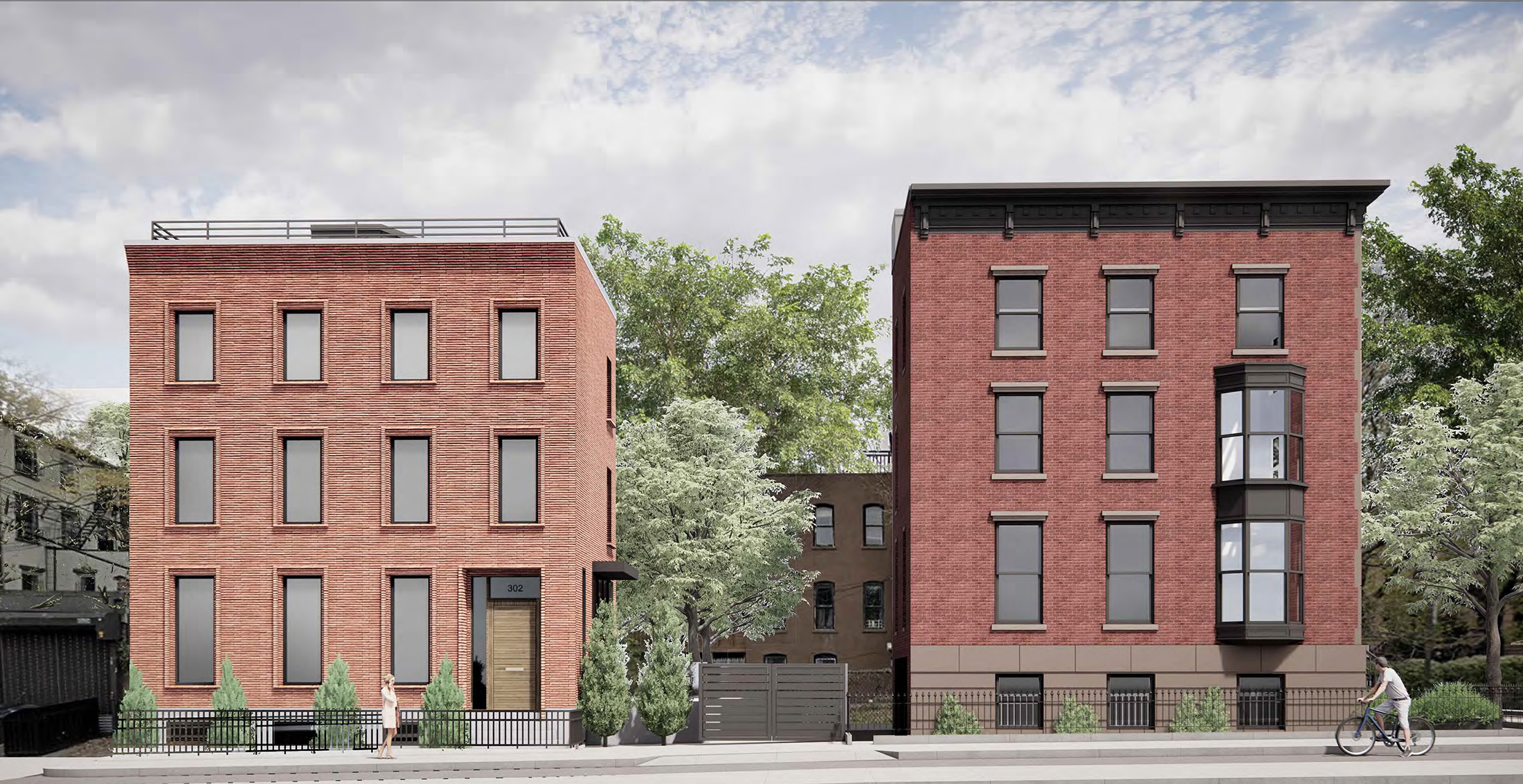
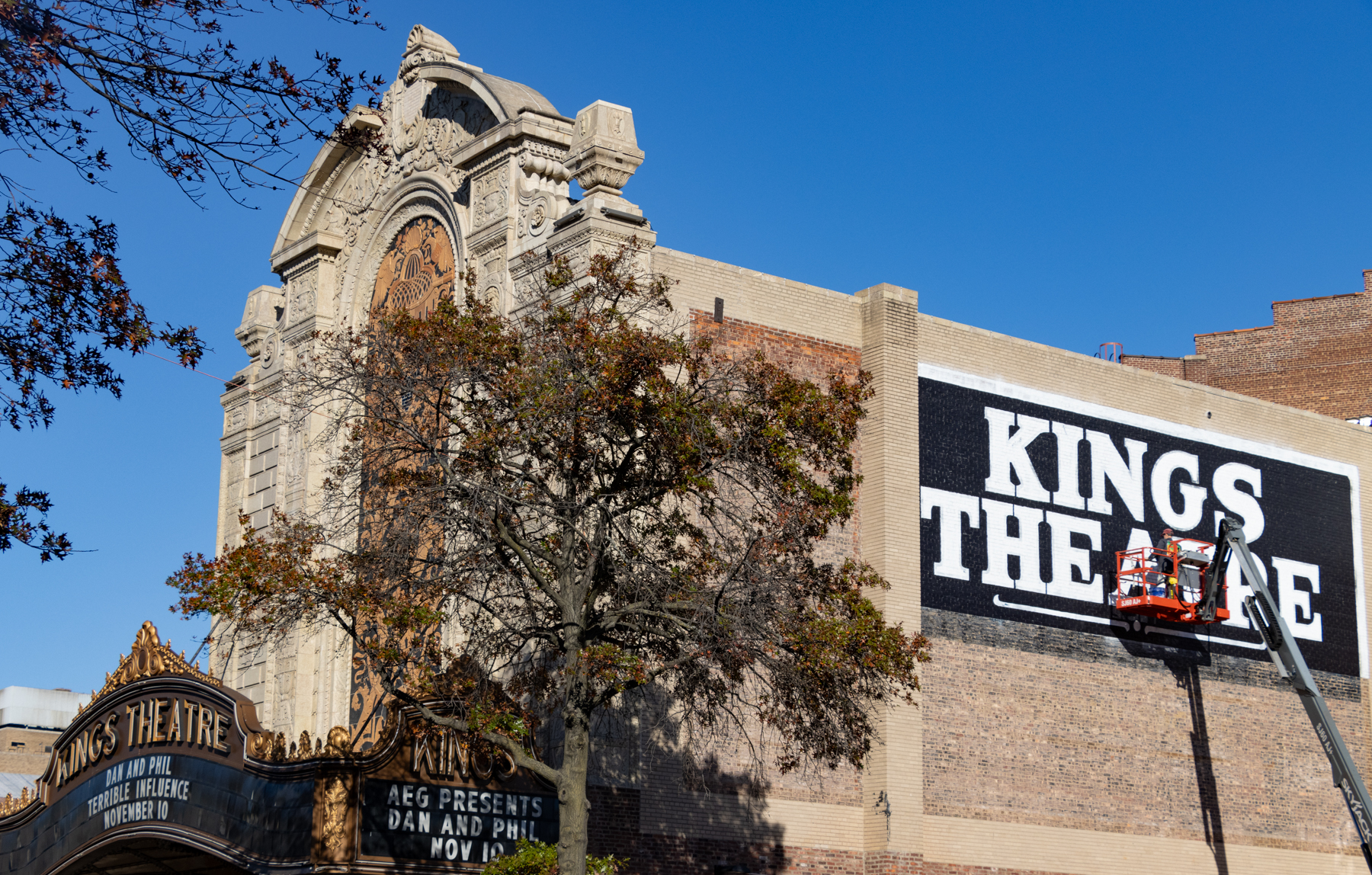




I grew up in the housing projects in the late 60’s early 70’s that were built in the early 1960’s just west of the
Half Moon Hotel (Coney Island Houses ran from West 29th -33rd streets… We moved there in 1967. Early these ocean view projects were a great place to live but from the early 70’s on became progressively/increasingly a crime ridden,dangerous filthy slum after progressive White flight)…
By the time I was a young kid all the beautiful ornate “Bling” had been stripped from the gorgeous Half Moon Hotel building and as correctly stated was the “Metropolitan Geriatric Center” titled on a cheap black plastic sign over the now very crappy utilitarian entrance on West 29th st….Frequently the old Jewish senior citizens who lived there would sit outside the entrance on folding chairs until very late on beautiful summer nights….
What remained of the majesty of the Half Moon Hotel at that time (late 60s) was some of the beautiful Spanish Terracotta tile on the side facing the ocean but what was really SPECTACULAR was the gorgeous pink and medium blue dome interspersed with jagged gold lines….From the boardwalk it looked like it was constructed from shiny marble’…The B&W photos here do not do that beautiful work of art dome justice….At night the dome had a flashing red light extended at the top presumably to prevent the police helicopters and small planes that frequently traveled along the shoreline from crashing into it….
In the 3rd and 4th photos you will see a structure at the boardwalk edge to the left of the hotel…
I remember watching this structure being ENGULFED in flames one night from our window about 1971 and the fire department putting it out….Arson by the new Coney Island arrivals….
By the mid 90’s I was infrequently in Coney Island..,.I remember being absolutely shocked driving by and seeing this piece of history suddenly gone….This building should have been landmarked…..
On another note…Some people reading here may remember that large CYO summercamp (Catholic Youth Organization) building and olympic size pool in the back which was one block over to the right from the Half Moon Hotel when viewing from the boardwalk….Every summer in the 70’s that CYO summercamp pool was mobbed with kids having fun….
I was born at Harbor Hospital, in Coney Island, on Dec. 6, 1949
Thank you, a great story!
Montrose – This isn’t on topic, but I was wondering if you had any recommendations for books on 19th century Brooklyn.
Thanks!